Top 10 facts about emperor penguins
WWF-Canada just added four new species to our collection of symbolic adoptions, including an emperor penguin family. When you bring wildlife home, you help protect their habitats.
At WWF-Canada, we naturally talk a lot about how sea ice decline will impact species in the Canadian Arctic. But over at the other end of the planet, Antarctic climate change is also putting ice-dependent species like the emperor penguin in peril.
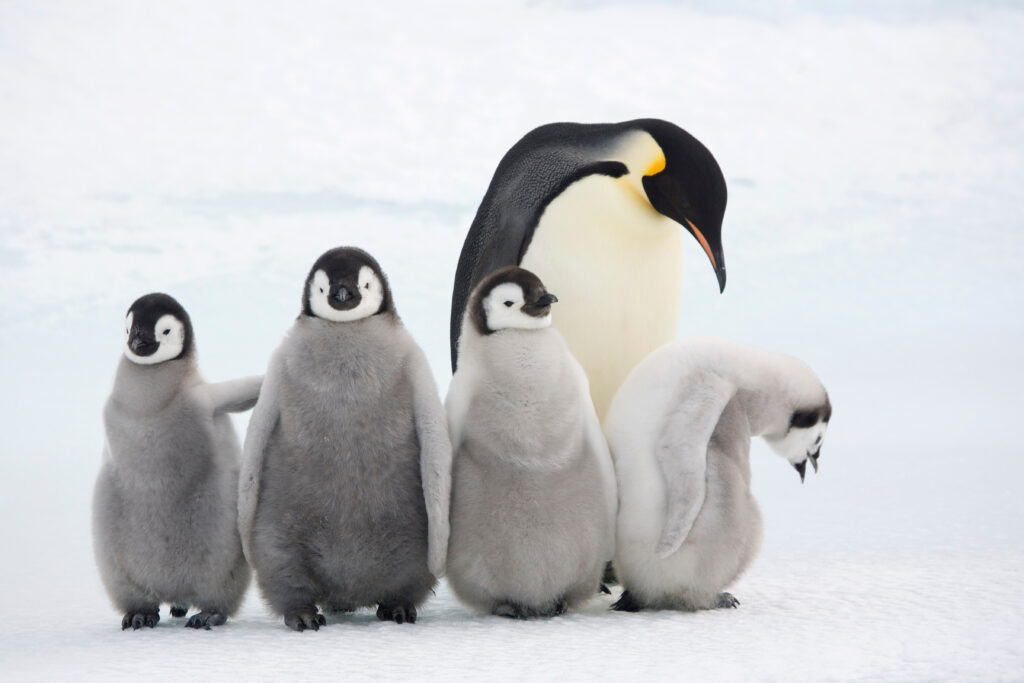
A recent study found that record-low sea ice in Antarctica’s Bellingshausen Sea likely resulted in the catastrophic loss of up to 10,000 emperor penguin chicks. Of the five breeding sites in the region, all but one experienced a break-up of ice in November, a month or two before the chicks would have grown their waterproof adult feathers or learned how to swim. Sadly, incidents like this could become more common as the world warms.
Read more about the emperor penguin and how you can help safeguard wildlife in the face of climate change.
Ice, ice baby
Wild emperor penguins, which are only found in Antarctica, breed and raise their young mostly on ‘fast ice,’ a floating platform of frozen ocean connected to land or ice shelves. From birth, they spend their entire lives in and around the Antarctic ice, although very rarely vagrant penguins have turned up off the coast of New Zealand.
Giants of the penguin world
Emperors are the biggest of the 18 species of penguin found today, and one of the largest of all birds. They are around 120 centimetres tall (about the height of a six-year-old child) and weigh around 40 kilograms.
How many penguins?
There are approximately 595,000 adult emperor penguins in Antarctica. They are listed as Near Threatened by the IUCN as their population is projected to decline rapidly due to climate change.
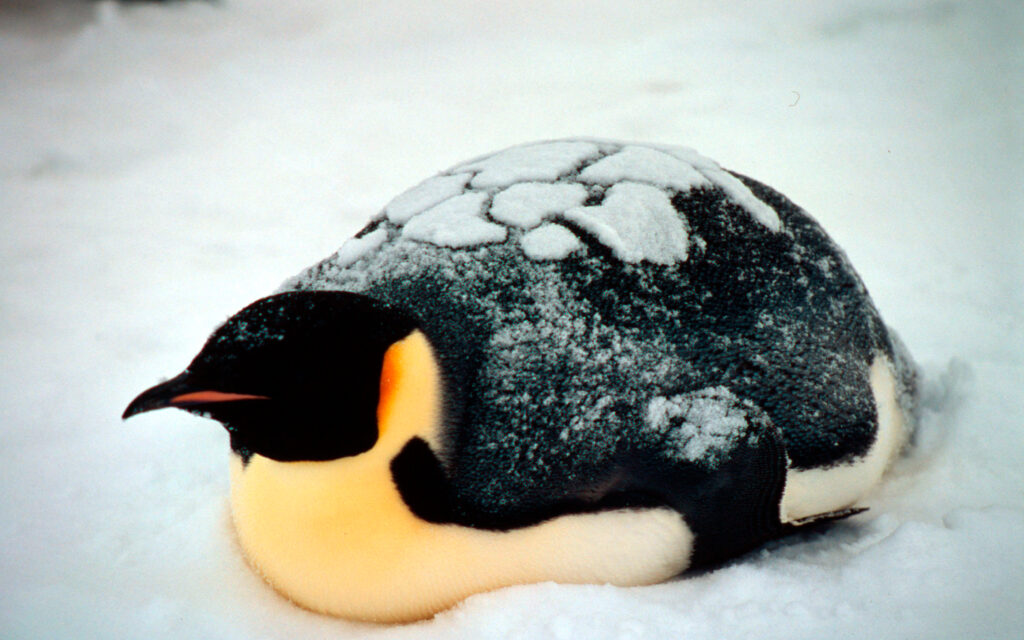
Penguins from space
Emperor penguin colonies have been discovered and counted from space. A survey led by British scientists in 2012 used satellite technology to identify emperor colonies from the poo stains left on the ice at breeding sites. They discovered a number of previously unvisited colonies and were able to provide estimates of the total number of individual penguins.
Penguin love
Emperors incubate their eggs during the long and dark southern winter months. Courtship displays are intricate, but copulation is quick, and the female lays a single egg in May or June. She then passes it over to her mate to incubate and spends the next nine weeks at sea feeding. The male carefully balances the egg on his feet between 65 to 75 days to keep it warm and off the snow in a specially adapted brood pouch until it hatches. Then out pops a fluffy chick!
Baby, it’s cold outside!
Emperors are uniquely adapted to survive these harsh conditions when temperatures can drop down to a bone-chilling -50°C with winds of up to 200 km/hr. They have two layers of feathers, a good reserve of fat and proportionally smaller beaks and flippers than other penguins to prevent heat loss. Emperors also have feathers on their legs, so their ankles don’t get too chilly.
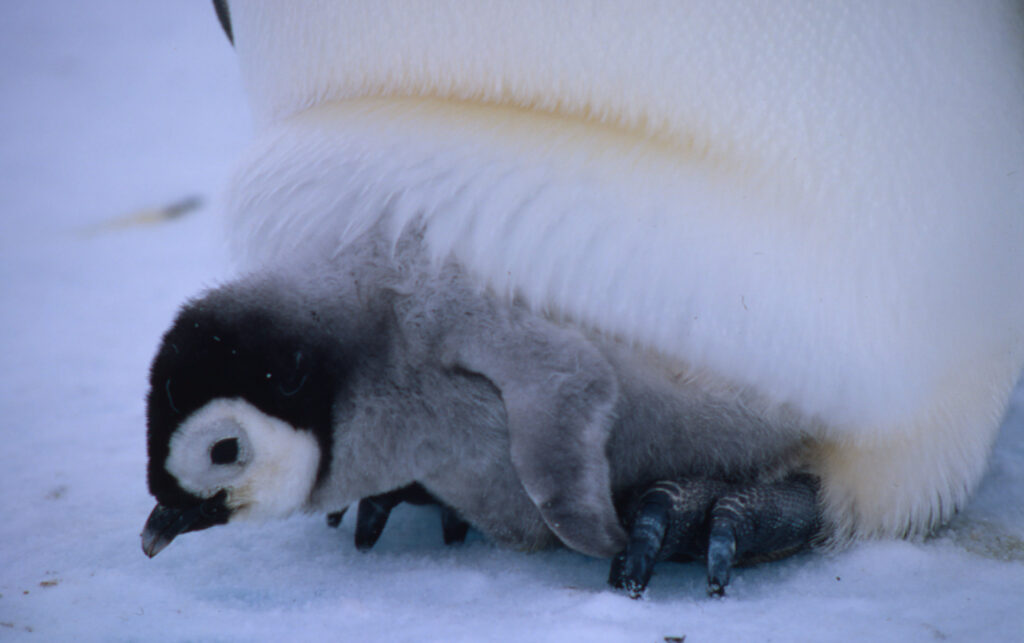
Even their feet are adapted to the icy conditions, containing special fats that prevent them from freezing and strong claws for gripping ice.
Most remarkably, colonies of adults and chicks work together to huddle for warmth. More than 5,000 tightly packed penguins shuffle around, so each takes a turn on the outside of the huddle where it’s the coldest. This is in complete contrast to their quarrelsome and territorial neighbours, the Adélie penguins.
Dive, dive, dive
Emperor penguins are the Olympic divers of the bird world with the deepest recorded dive reaching 564 metres and the longest recorded dive was nearly 28 minutes.
Fish suppers
Emperors feed mostly on Antarctic silverfish as well as other fish species, krill and some squid. An adult penguin eats about 2 – 3 kilograms per day but can sometimes eat twice this much to build up their store of body fat for winter or for feeding their chicks.
… and crash diets
Male emperor penguins will not eat for up to four months, from the time they arrive at the colony to breed until the egg has hatched and the mother returns to feed. They lose almost half of their body weight during this time, relying entirely on the reserve of body fat that they built up during the summer feast to survive the long winter.
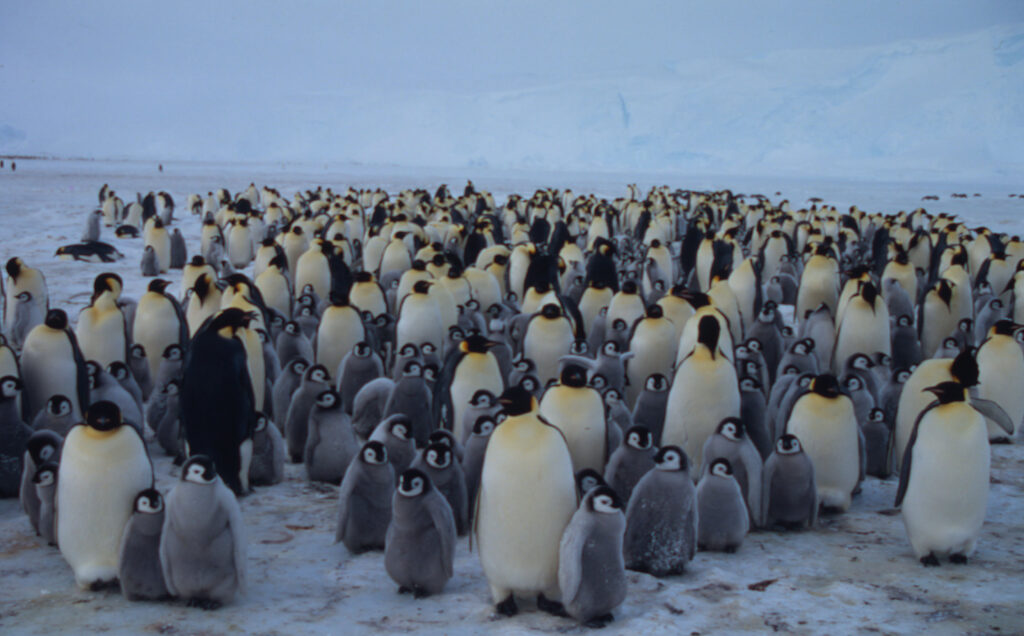
Vertical limits
Emperor penguins can climb steep ice cliffs and have been known to breed up on ice shelves, if the sea ice below fails. This may be a useful adaptation strategy as Antarctica warms due to climate change, but it might not help them in the long term if the fast rate of warming continues.
Why adopt an emperor penguin family?
The emperor penguin has seen some of its colonies halved in size over the past half century. When you invite an emperor penguin family into your home with our true-to-life plush, you help protect their homes and the homes of countless other species in the wild.
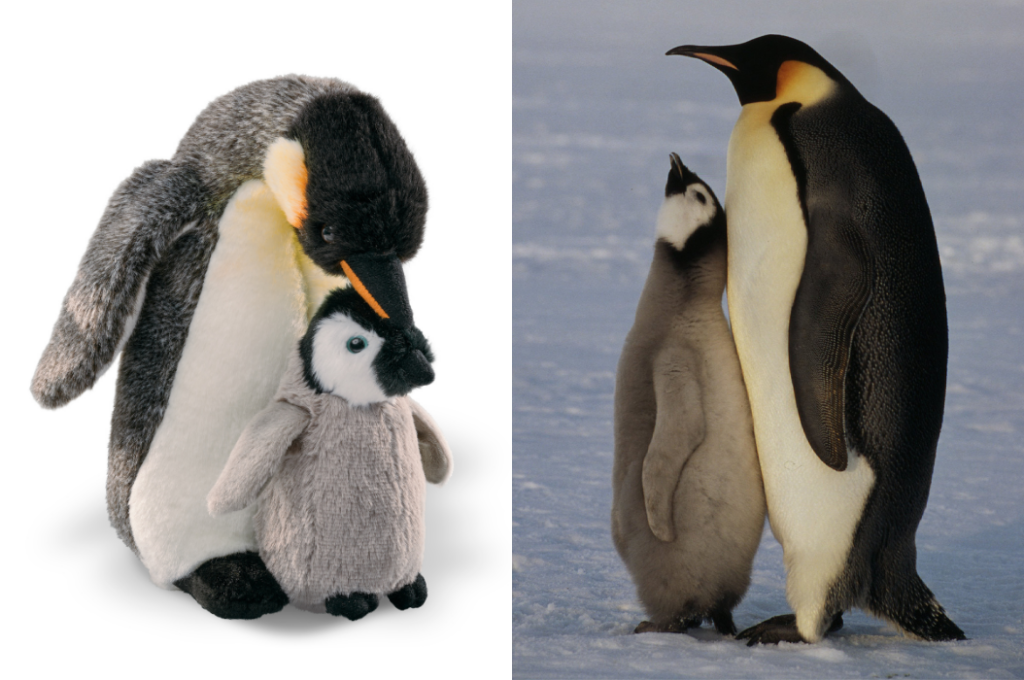
Designed with the help of conservation experts, our emperor penguin family features their distinct white stomach, black head, back, tail and wings, and yellowy-gold markings on the side of their head and neck. The baby penguin features black and white feathers on their faces with soft fuzzy grey feathers covering their bodies.
Visit wwf.ca/shop to explore our collection of more than 45 animals. Each adoption kit comes with a true-to-life plush animal, educational poster, personalized adoption certificate, reusable tote bag and a charitable tax receipt.
